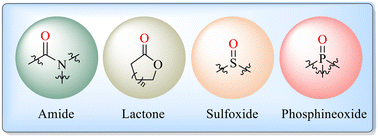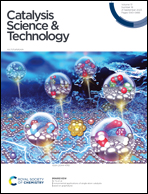Theoretical study of reductive CO2 functionalization with amines and phenylsilanes: what kind of solvents can be used as catalysts?†
Abstract
In this study, the mechanisms of CO2 formylation and methylation with N-methylaniline and PhSiH3 were investigated using density functional theory (DFT) calculations, and the chemical selectivity of the reaction towards formamide or methylamine products was analyzed. The solvent N,N-dimethylformamide (DMF) served as both the solvent and catalyst. The obtained computational results indicated that both reactions are initiated by three successive CO2 reduction steps with hydrosilane to give a stable species, triformyloxysilane [Si](OCHO)3. Subsequently, formamides are generated upon the formylation of amines with the reduced CO2 at low temperatures. At high temperatures, methylation occurs via a key formaldehyde intermediate, leading to N,N-dimethylaniline. Based on the relationship between free energy barriers and the Hirshfeld charges of oxygen atoms in the solvents, the generic structures of solvents that can effectively promote the reduction of CO2 with phenylsilane are given. These solvents have a negatively charged oxygen atom with a Hirshfeld charge less than or equal to −0.28.



 Please wait while we load your content...
Please wait while we load your content...